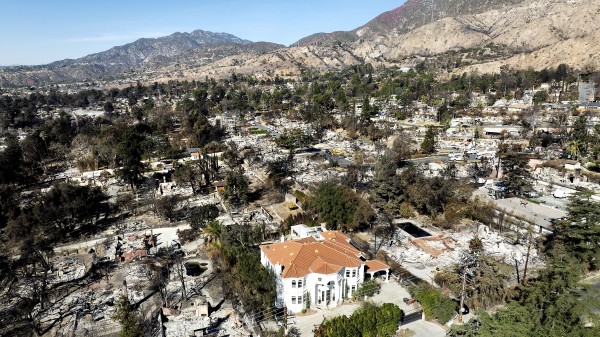NEW YORK (AP) — A federal scientific publication on Thursday returned from a forced two-week hiatus with two papers examining the health effects of wildfires in Hawaii and California.
The Centers for Disease Control and Prevention resumed the Morbidity and Mortality Weekly Report, which the Trump administration suspended as part of a “pause” on regulations, guidance, announcements, press releases, social media posts and website posts.
The CDC has gradually restarted some communications and reports, but the silencing of MMWR, as it it known, prompted a chorus of concern from public health leaders and some legislators.
“Outbreaks are not contained because scientists are ordered to stop talking about them,” Sen. Dick Durbin, a Democrat from Illinois, said in a Wednesday night statement calling for the publication to be restarted.
MMWR issues typically run 20 to 25 pages and contain four or more reports about disease investigations, health trends or other public health developments. Thursday’s publication was slimmer than usual: just over eight pages, with two short reports.
One of the reports was about last year's Maui wildfire. Researchers measured the blood of responding firefighters, looking for per- and polyfluoroalkyl substances, or PFAS. The manmade chemicals have been linked to cancer and other health problems.
Previous studies have shown firefighters have higher concentrations of some PFAS in their blood. Thousands of firefighters have sued manufacturers and companies that make firefighting gear and foam, seeking damages for their exposure.
The new study looked at about 180 firefighters and 80 other county employees. It found the firefighters' blood had higher concentrations of some PFAS, but most were still at levels below a medical threshold that triggers the need for further testing. The researchers had no baseline measurements of the people in the study from before the 2023 fire, so it's hard to know if blaze contributed, the authors acknowledged.
The second article looked at hospital emergency department visits during last month's Los Angeles wildfires. It found visits decreased 9% over the first six days of the wildfires.
That's consistent with other research that has shown declines in ER visits immediately after natural disasters. The drop may be due to evacuations that caused people to leave Los Angeles or to get medical care from places other than hospitals. Information from hospitals in surrounding counties was not included in the new report.
Before the journal went on hiatus, the CDC was expected to soon publish articles about the bird flu outbreak. A CDC spokesperson didn't say why the articles weren't published this week but said they "are still in the pipeline.”
Dr. Tom Frieden, the CDC director during the Obama administration, said he was pleased to see the journal return but also concerned that it “doesn’t contain any reports on bird flu spreading in animals and people, the new strain of mpox spreading or other emerging health threats.”
Dr. Georges Benjamin, executive director of the American Public Health Association, said he wants to see meatier issues that have the information that researchers, local health officials and others need “to make data-driven decisions.”
The MMWR has been called “the voice of the CDC.” Published weekly since 1961, it has for generations been the main way the agency recounted disease investigations, shared public health recommendations and conveyed other health information.
It had never taken a two-week break.
Typically released every Thursday, the journal has more than 147,000 electronic subscribers — a readership that’s mainly doctors, nurses, educators, researchers and public health scientists.
A paper published in June 1981, about previously healthy gay Los Angeles men who came down with lung infections, turned out to be the first published report documenting the disease that came to be known as AIDS. In April 2009, the journal reported the first two cases of what became known as the H1N1 “swine flu” pandemic.
In 2020, during the first Trump administration, the MMWR became the focus of concerns about political interference with CDC’s scientific work. White House officials believed CDC scientists were undermining Trump by trying to make the COVID-19 pandemic appear worse than it was.
The journal’s editor at the time, Dr. Charlotte Kent, later told Congress that administration officials pressed her to delay publication of at least one article and told her to delete an email that showed political meddling.
“If political decisions determine which health threats to highlight, we’ll all be less safe," said Frieden, president of Resolve to Save Lives, a not-for-profit organization that works on international public health issues. “I hope the new administration will see the value in CDC publishing information on health threats every week, without political interference.”
___
The Associated Press Health and Science Department receives support from the Howard Hughes Medical Institute’s Science and Educational Media Group and the Robert Wood Johnson Foundation. The AP is solely responsible for all content.



















